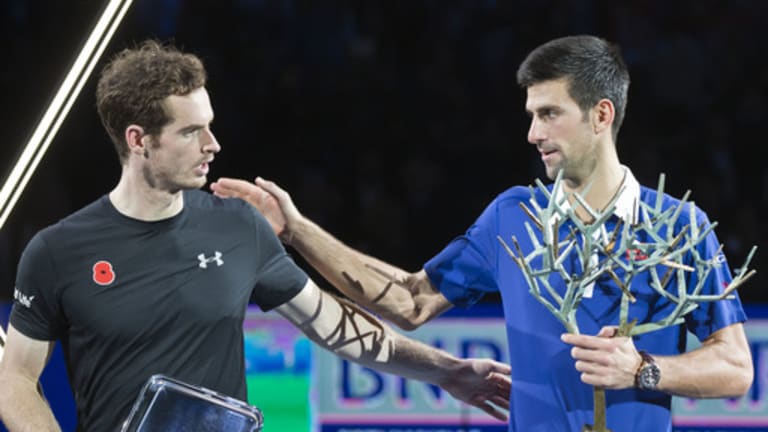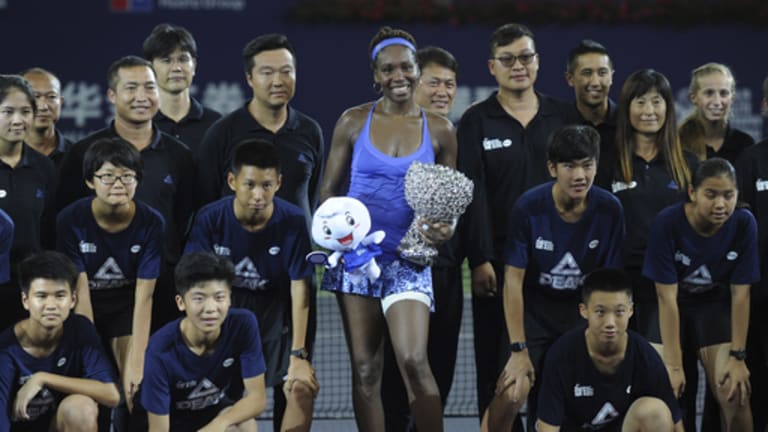There’s a look that players get these days when they face Novak Djokovic. The eyes have a little less life in them, the shoulders are a little more slumped, the feet trudge, rather than spring, toward the sidelines on changeovers: “Blank” may be the best way of describing it. It’s as if Djokovic’s opponents don’t want to get their hopes up only to have them ground to smithereens again.
It didn’t take long for Andy Murray to betray the telltale signs of Djokovitis in Paris on Sunday. Despite playing well all week at the BNP Paribas Masters, and despite having beaten Djokovic as recently as August, Murray was slow off the mark in the final. In his second service game, he was a step behind the Djokovic attack and was broken at love. In the next game, Murray swung too far in the other direction, overhitting a pair of easy mid-court forehands that he would normally put away, and trying an early-in-the-rally drop shot that had more than a whiff of desperation about it. Even when Murray won a battle, it hurt him in the war: After persevering through an 11-minute service game to hold for 2-3, Murray lost the next three games and the set.
It’s hard to blame Murray for feeling pessimistic; this 6-2, 6-4 defeat was his 10th loss in 11 meetings against Djokovic, and his sixth in 2015 alone. In three of those, he was able to win a set, but not in Paris. When Murray made his expected second-set run, winning 11 of 14 points and nearly going up a break, Djokovic made sure to snuff it out early. He was determined to avoid a repeat of what had happened the previous day, when Stan Wawrinka came back from a break down in the second set to win it 6-3. (Djokovic won that match going away, 6-3, 3-6, 6-0.) This year, as I’ve written many times before, Djokovic has been willing to bend but not break; on Sunday he didn’t allow himself to bend, either.
From that perspective, you’d have to say Djokovic has only improved since winning the U.S. Open and clinching the year-end No. 1 ranking. Instead of dropping sets and bouncing back, he’s no longer dropping anything. Djokovic has won 30 of the last 31 sets he’s played; the thought of losing one now seems intolerable to him.
“There were a couple of games in the second set where Andy started turning things around,” Djokovic said. “But I managed to stay tough. It was, all in all, the best performance of the week, and it came at the right time.”
Djokovic also appears to have improved against Murray. His straight-sets win in Paris followed an even more one-sided 6-1, 6-3 win over the Brit in Shanghai last month. In the past, their matches have produced long rallies that could border on the tedious. This fall, though, Djokovic has been unwilling to settle for tedium. On Sunday he was relentless in the way he changed direction with the ball and pushed Murray into the alleys with his crosscourt backhand, all without seeming to take on any more risk than normal.
“I think I was very solid from the very first point,” Djokovic said, “very similar to a performance I had against him in Shanghai in terms of intensity and, really, you know, strength in the shots and really protecting the baseline, trying to be the one that dictates play.”

